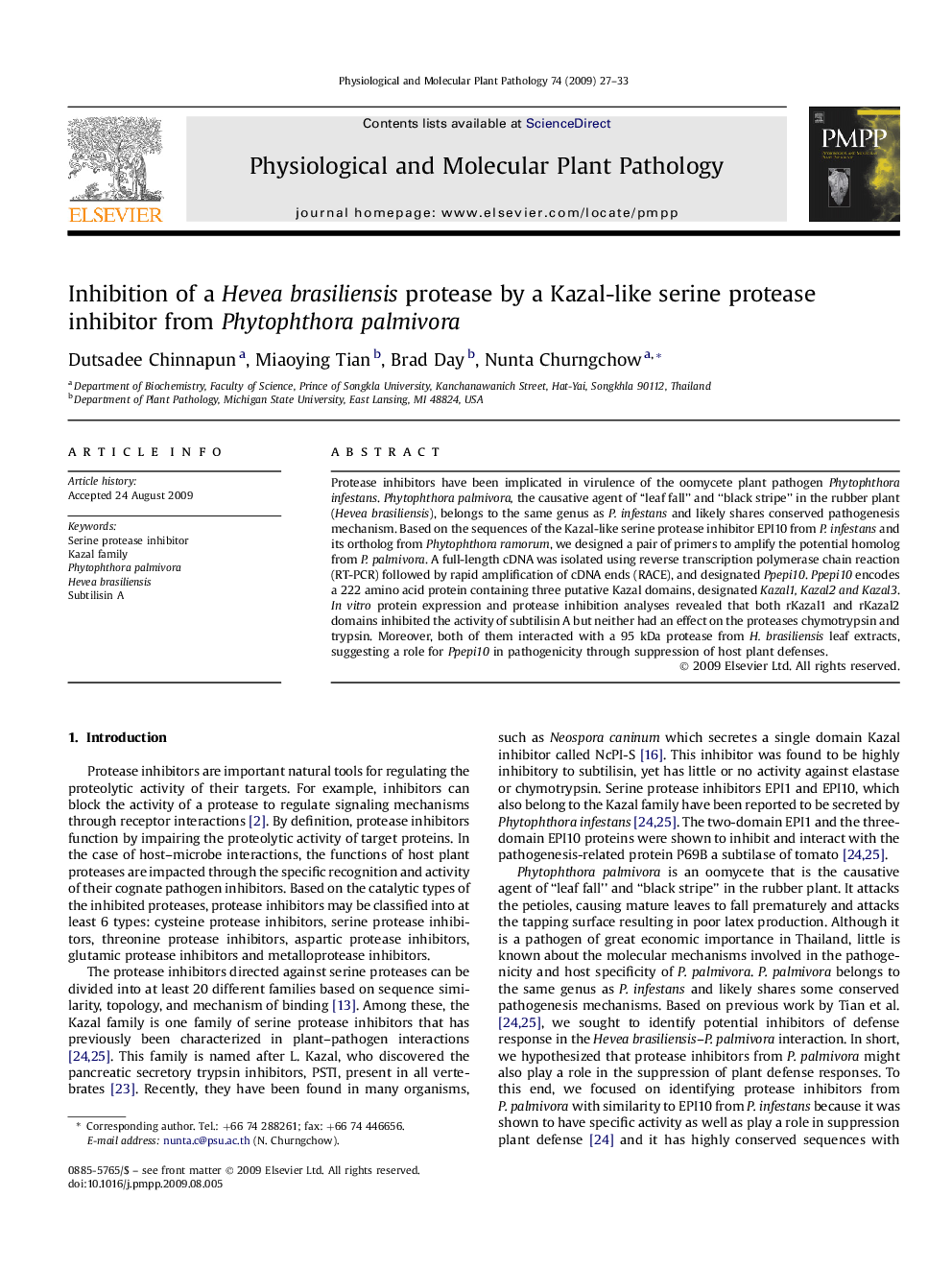| Article ID | Journal | Published Year | Pages | File Type |
|---|---|---|---|---|
| 2836565 | Physiological and Molecular Plant Pathology | 2009 | 7 Pages |
Protease inhibitors have been implicated in virulence of the oomycete plant pathogen Phytophthora infestans. Phytophthora palmivora, the causative agent of “leaf fall” and “black stripe” in the rubber plant (Hevea brasiliensis), belongs to the same genus as P. infestans and likely shares conserved pathogenesis mechanism. Based on the sequences of the Kazal-like serine protease inhibitor EPI10 from P. infestans and its ortholog from Phytophthora ramorum, we designed a pair of primers to amplify the potential homolog from P. palmivora. A full-length cDNA was isolated using reverse transcription polymerase chain reaction (RT-PCR) followed by rapid amplification of cDNA ends (RACE), and designated Ppepi10. Ppepi10 encodes a 222 amino acid protein containing three putative Kazal domains, designated Kazal1, Kazal2 and Kazal3. In vitro protein expression and protease inhibition analyses revealed that both rKazal1 and rKazal2 domains inhibited the activity of subtilisin A but neither had an effect on the proteases chymotrypsin and trypsin. Moreover, both of them interacted with a 95 kDa protease from H. brasiliensis leaf extracts, suggesting a role for Ppepi10 in pathogenicity through suppression of host plant defenses.
